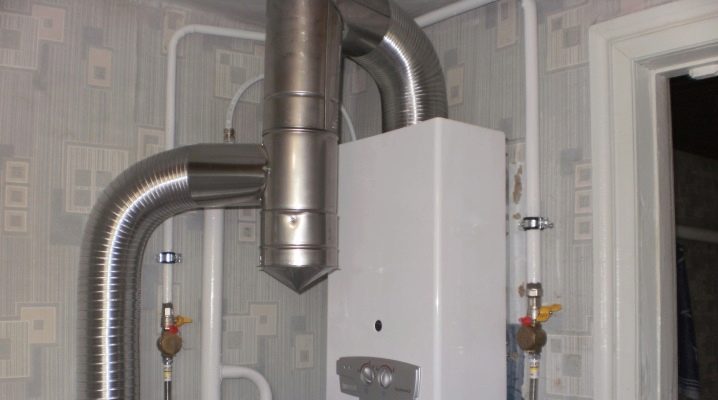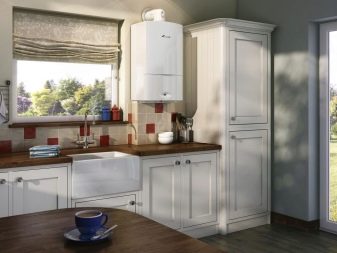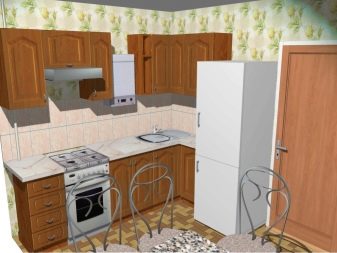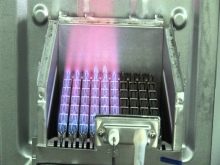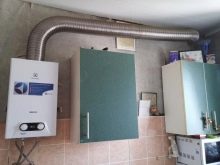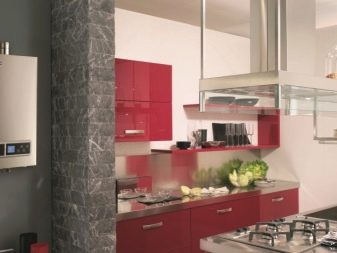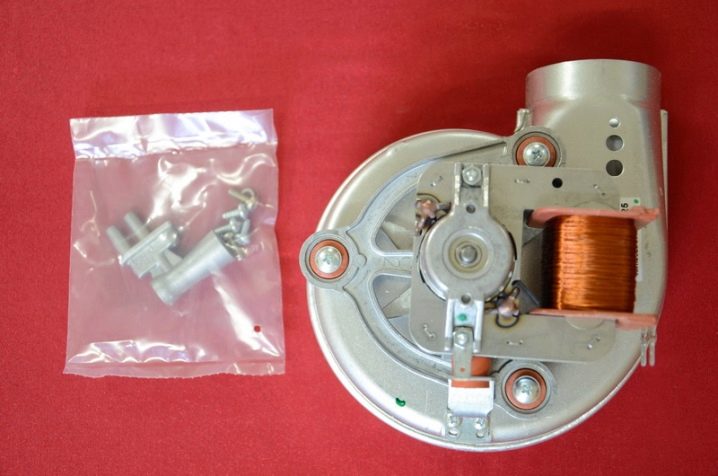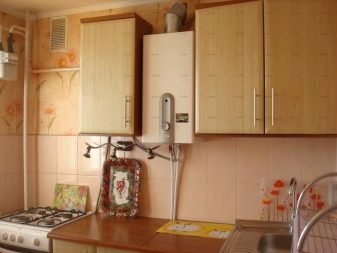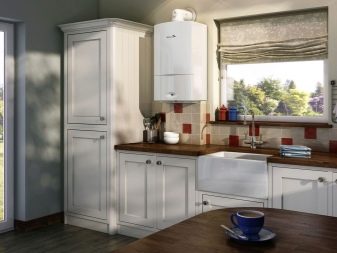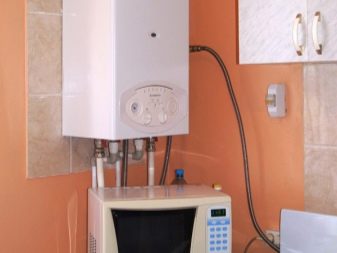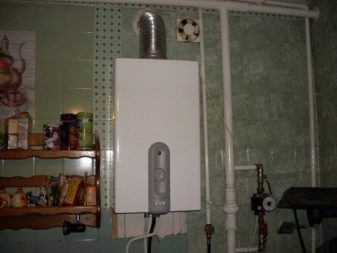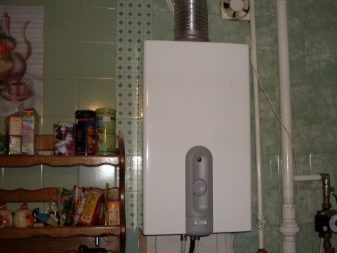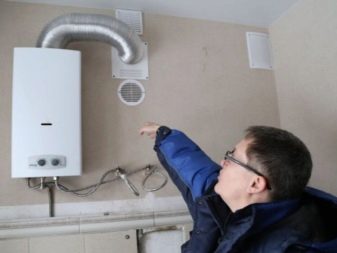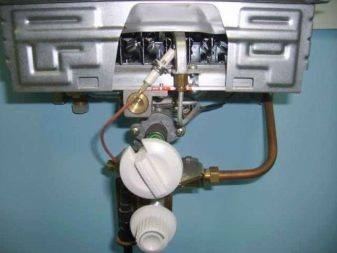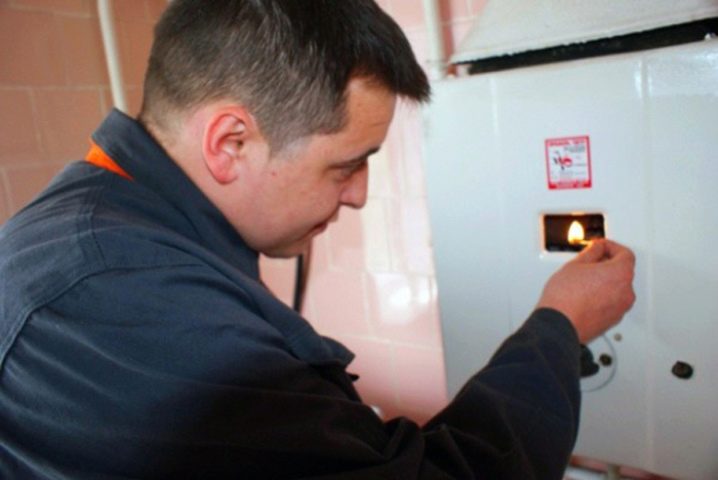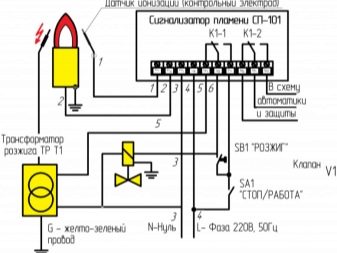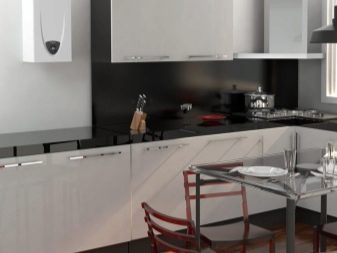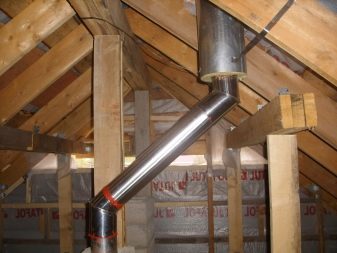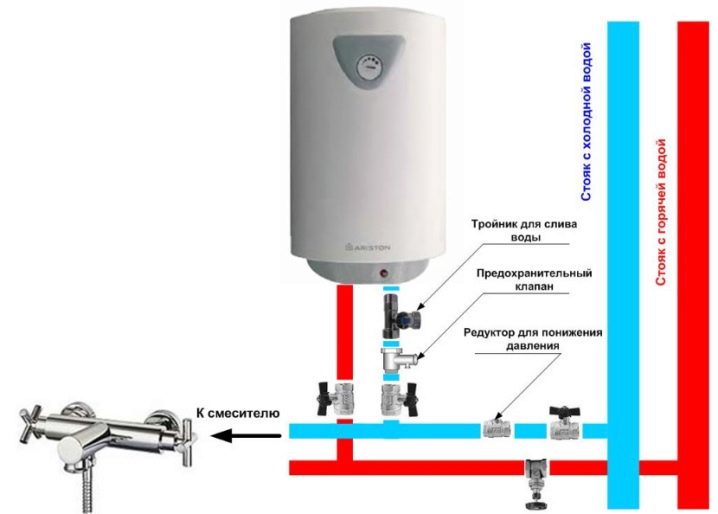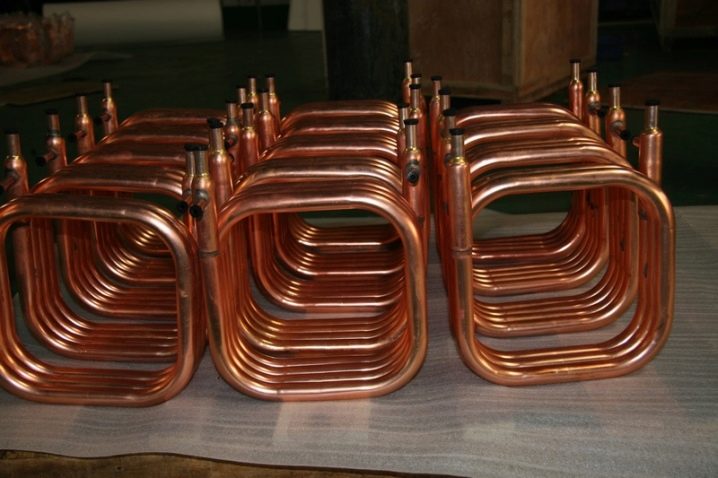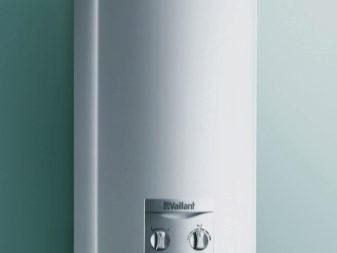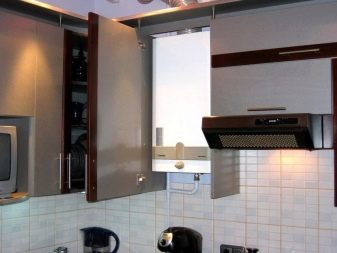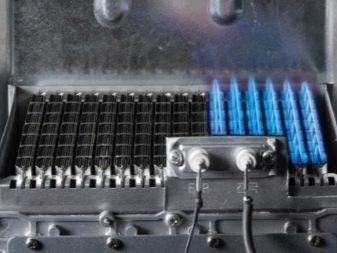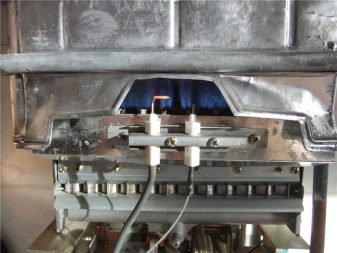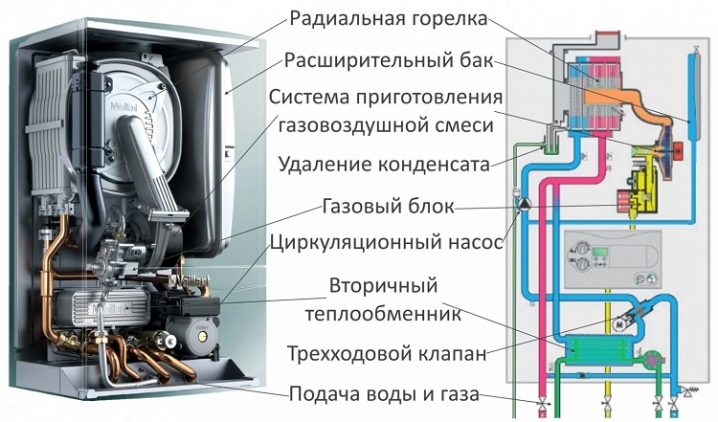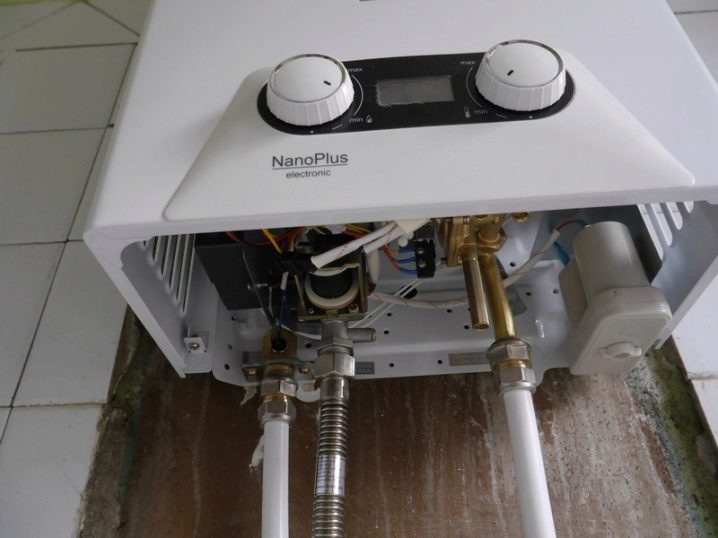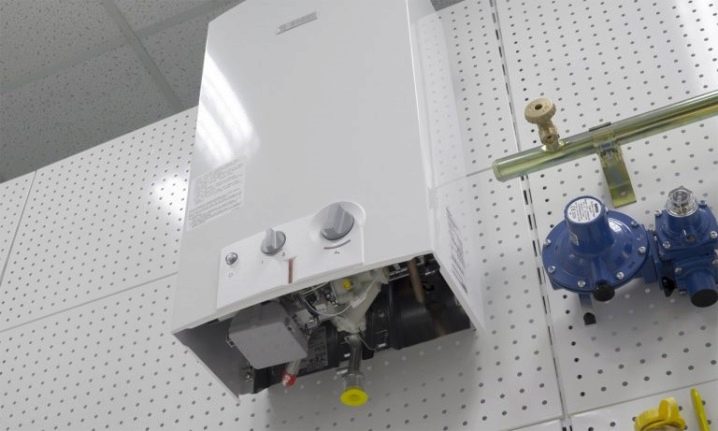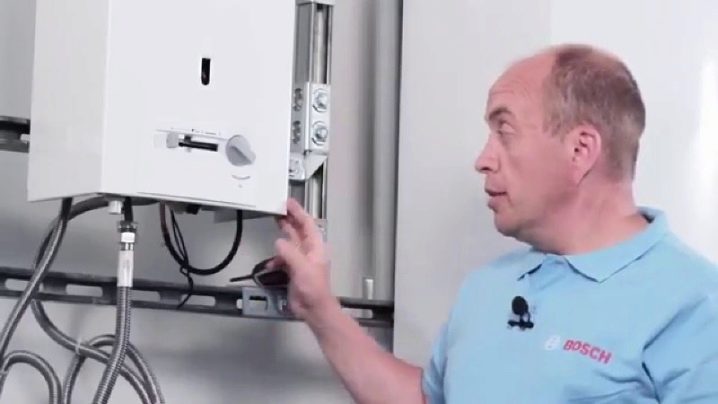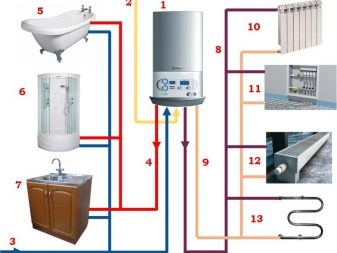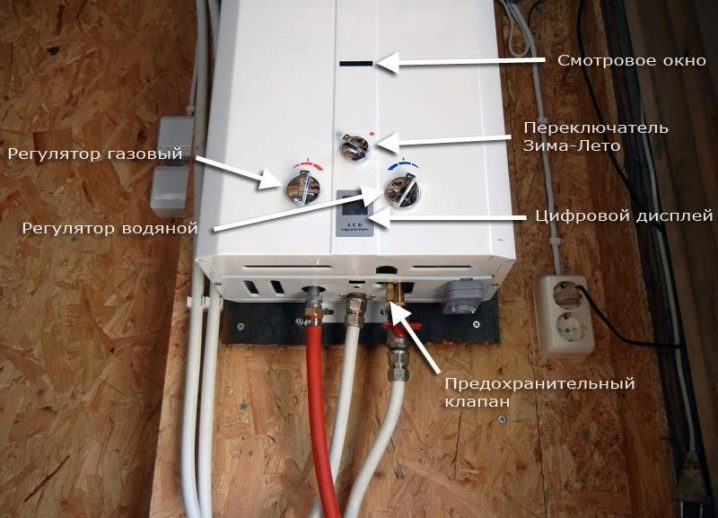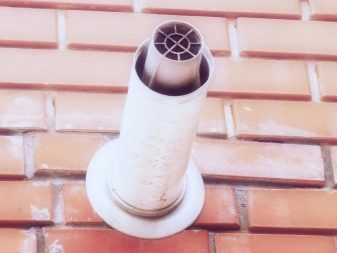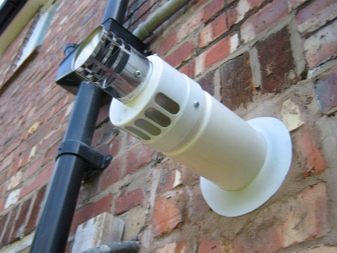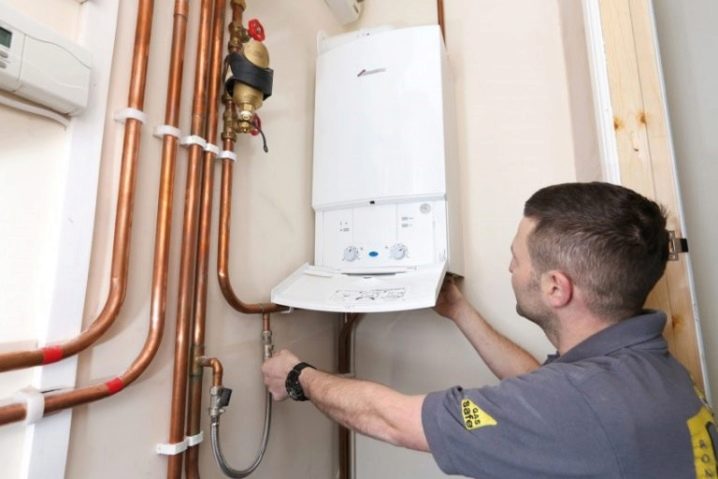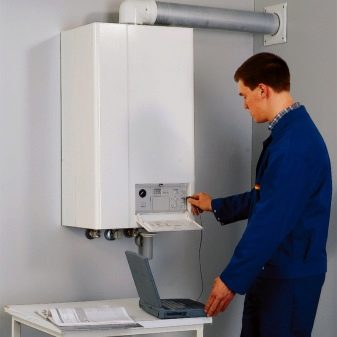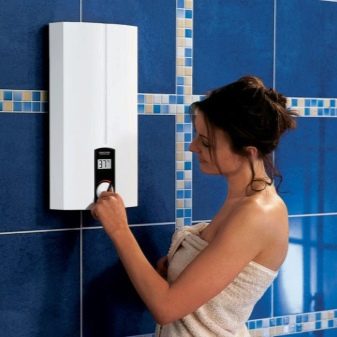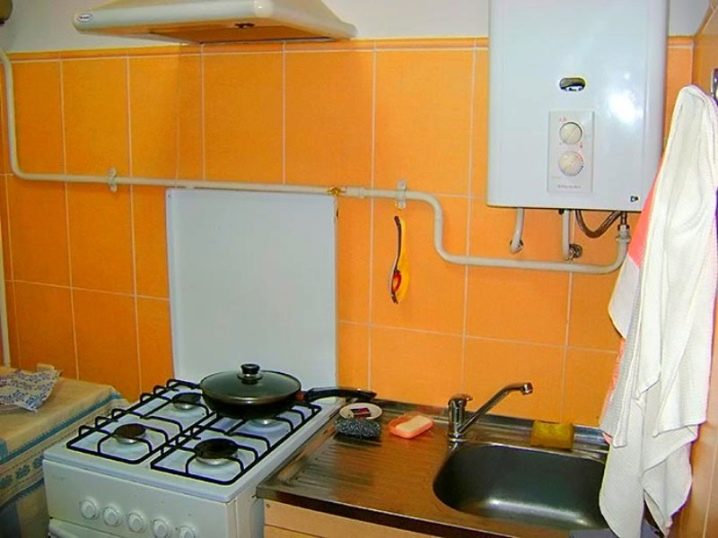Geysers: types, nuances of choice and application
The use of natural gas to produce hot water has been practiced for several decades. But a wide variety of models of such devices burdens the choice. To eliminate blunders when making a final decision, it is necessary to take into account the basic technological nuances.
Special features
The principle of operation for gas columns of various brands and models is not very different. Of course, the approach of each manufacturer allows you to influence the technical characteristics, but this is already in the field of private innovations. The big difference is traced between atmospheric and turbocharged vehicles. Atmospheric design was used mainly in older systems. Now it is much less common.
The classic version implied the use of manually operated burners. And in turbine systems, stepped or even modulated gas combustion systems are used. The difference is manifested in the way air is exchanged: in atmospheric models only the convection effect is used, and in turbine the main work is assumed by the fan.
The difference between specific models of gas columns concerns:
- performance;
- type of burner;
- degree of security;
- ignition method;
- flue gas method.
Kinds
The description of the concept of a geyser is useful, but the question remains - why then, if “everything is so simple”, this product is divided into a number of types. It is easy to answer it: it is simple (and in general terms) that it is the main scheme of action, and most manufacturers are trying to improve their water heaters. One of the most useful innovations is reasonably considered to be a turbocharged circuit, which allows you to get hot water, even in the absence of high-quality chimney. After all, placing it may not always purely for technical reasons.The discharge of flue gases into the main ventilation passages is strictly forbidden, and therefore the operational services sometimes impose restrictions on the installation of a gas column in an old house.
Theoretically, the exit could still be laying a remote chimney on the outer wall outside the boundaries of the apartment. But in high-rise buildings, if the apartment is located on the 2nd or 3rd floor, not to mention the higher ones, such a decision incurs significant costs. In addition, it is technically difficult and can be implemented only by professionals. Because turbo chimney gas is the best solution.
It certainly includes a low-power fan that can compensate for the insufficient length and height of the chimney installation.
All that remains for people is to lay a chimney outside. There is no need to reach the vertical segment to the roof. But the column with the turbine itself is divided into two main formats. The semi-turbo apparatuses can be mounted wherever there is sufficiently efficient ventilation. The role of the internal fan in this case is reduced solely to the removal of gaseous products of combustion, and the main domestic ventilation takes over the supply of fresh air to the combustion chamber.
Relatively low power and reduced price - these are the obvious advantages of such speakers. But the problem is that they should be mounted only where the total air flow is sufficient. If it is impossible to achieve regulatory indicators, you will have to choose an alternative solution. It consists in the use of full-fledged turbo columns, which, along with the removal of harmful components, support the supply of the required amount of fresh air. A prerequisite for normal operation is the use of a coaxial chimney (the very “pipe in the pipe”).
Usually, the inner segment serves to pump smoke, and the outer part allows you to get fresh air. This solution allows designers to choose an impermeable combustion chamber for equipping the column. And because of this, the security level is increased when using the system. Artificially pumped air maintains increased efficiency, which means that in order to heat water of a certain volume to a given temperature, less natural gas will have to be spent. Already this circumstance allows to consider justified the rather large cost of the device itself.
Since the gas column is sealed, even in the summer hot day it does not overheat the room. Preventing oxygen burning is important for maintaining a healthy atmosphere in your home. However, one must bear in mind the inevitable weaknesses of any turbocharged vehicle. So, if the work of a transformer substation is disrupted, the wires on a power line break, or the meter refuses to enter the house, such a column turns out to be a useless metal rectangle. You will need to buy an uninterruptible power supply, which greatly reduces the benefits.
But concerns about excessive noise of the ventilation unit are unjustified. The sound will inevitably be present, but consumers will not receive significant inconvenience.
As of mid-2018, turbocharged speakers cost at least 15-17 thousand rubles. Installing them without consulting the natural gas supplier is against the law. And in apartment buildings it will be strictly necessary to obtain consent from all homeowners on the higher floors.
The main advantages of flow-through devices with a closed combustion chamber have already been characterized. But it is important to clarify that they can be equipped with various igniting devices. The oldest heaters were ignited manually, matches were used for this. To meet such systems in the model range of modern companies will not work, but the latest devices of this type are still being used in different places.
Semi-automatic ignition of the flame is made in the gas column, equipped with a piezoelectric element.
The design provides for the separation into two burners: the initiative and the general, with the first one to burn continuously. But at the moment of opening the valve, lifting the lever, when the passage of hot water is recorded, the main device starts up. But you have to take care of this yourself, without automation. The user presses the button located on the front panel. Under the influence of an electric spark, gas starts burning through the initiative torch.
When the water flow is consumed, both burners act simultaneously, but it is worth stopping the stream of water as the heating stops immediately. He just waits again for the fuse when it comes time for him to complete the task.The described scheme allows manufacturers to reduce costs, and therefore reduce market prices. Unpretentious performance is emphasized by the active use of mechanical control parts. At dachas and country houses, on the outskirts of cities, such models, which do not require constant power supply, turn out to be quite attractive.
But there are serious flaws that every buyer should take into account. Even despite the small size of the wick and the restriction of the passage of gas through it, the amount in the monthly receipt rises sharply. If you constantly turn the water heater on and off, it will create unnecessary inconvenience and significantly reduce the life of the device. Another irritant is the inability to use hot water if the wick goes out.
The reasons for the extinction can be very diverse, for the most part they are associated with a weakening of the thrust or oxygen deficiency.
The most pleasant to use models of gas water heaters with electric ignition. It's simple: the spark-generating device starts to act on a command that the electronics supplies immediately when the tap is opened.If it is closed, gas consumption is zero, which is very good for personal and family budgets. Where electricity is often disconnected, it is advisable to prefer battery-powered models. But it immediately imposes on the owners the obligation to constantly monitor the usefulness of their charge, so that the heating of the liquid begins guaranteed.
The thing is that a gas burner that is constantly connected to the network consumes a lot of current - a myth. For full-fledged work, such installations are equipped with microprocessors. The difference between them is in the type of control panel - it can be made in a push-button or touch format.
Problems can be caused by both the high price and the obligatory power supply, and not just any, but only with strictly deviations that correspond to the norms. In real conditions of the Russian power grids it is very difficult to withstand such requirements, because you have to additionally buy a stabilizer. Relay his appearance manifests itself much worse than an electronic device. The advantage is that, along with bringing the voltage back to normal, the device makes the pulses smoother.For highly sensitive electronic components this is extremely important.
If the choice is stopped on the heating equipment equipped with modern electronic blocks, it is hardly worth stopping at this. After all, paying for devices with flame modulation accounts for a relatively small additional amount, and the positive result clearly covers the “investment” made. The essence of such a technical "highlight" is simple: it implies a smooth, without sharp jerks, changing modes of operation. Since external factors continuously affect the temperature in the heating circuit, the boiler must necessarily adapt to these changes.
Completely devoid of adjustment devices have long been outdated and practically not made. Closer to the consumer ideal two-stage units. But the accuracy of setting the settings in them is unsatisfactory. If the instructions or somewhere else say that the modulation is partial, it means that the adjustment will be smooth only in one part of the device. Differences can be associated with how exactly the modulation is implemented technically.
The hydraulic technique is mainly used for feeding hot water circuits. By registering the appearance of water flow, the sensor gives a command to the valve, changing the incoming volume of fuel. If modulation is chosen according to the ionization scheme, then the control is assumed by a special sensor that simultaneously controls the fire itself. One way or another, modulated columns, other things the same, consume less natural gas. What is important, with an increase in the flow of water from a hot faucet within reasonable limits, its temperature, if it is heated with a modulated burner, does not decrease.
A serious advantage is the fact that the fairly frequent reduction in gas pressure in the highways in winter does not reduce the effectiveness of the equipment. It is less likely to suffer from damage to certain components. Switches are the source of 9 out of 10 cases when you have to contact specialists. In this regard, the modulation clearly exceeds even the best settings for a phased power change. In any case, before buying, it is useful to get a recommendation from professionals: the number of nuances is too large to be taken into account independently.
You can not buy speakers in firms that do not have their own or at least authorized service centers. Exhaust system of coaxial type, which has already been discussed, many times reduces the number of cases when it is necessary to contact these centers. But you should ask whether the equipment is really suitable for a particular model or not.
It is also important to remember that vertical coaxial moves require very complicated installation. It is necessary to lead them through the ceiling, and then through the attic and the roof.
Materials and sizes
Any geyser always deserves an epithet small, if we compare it with a serious boiler. But it is worth remembering that miracles do not happen, and reducing the value invariably leads to a drop in overall performance. It makes little sense to use small systems for servicing several points of water at once. But in urban apartments, they fit well. The capacity of the built-in or complementary boiler can vary from 50 to 300 liters, depending on the needs of the owners.
The problem may be due to the fact that the columns equipped with accumulators have a significant volume.They are allowed to be installed only in separate rooms, even basements and attics are rarely suitable. You still have to strengthen the floor, and when installing on the first floors and in the basements, sometimes even reinforce the foundation. As for heat exchangers, the steel version of them is inexpensive, but at the same time and corrosion protection is small. In addition, the steel block is heavy.
The heat exchanger created from high-purity copper is close in mechanical parameters to that made from stainless steel, but its heat recovery is higher. But the simple type of copper contains an excess of impurities, which reduces the uniformity of heating. Some manufacturers claim that the pipes and the heat exchanger are internally coated with heat-resistant paint. But the whole meaning of this “lining” is close to zero, since the parts will still be burned through in the first years of operation. So investing in the purchase of a more expensive column is justified.
Old-fashioned designs that once occupied a lot of space in kitchens have long become a rarity. But despite the reduction in size, it is impossible to name the standard dimensions exactly.After all, at any factory they are selected individually, so it remains to find out in which line there are devices of suitable size. It is naturally interconnected with the power of the water heater.
Most often in the Russian market there are geysers with the size of:
- 70x45x25;
- 76x35x25;
- 65.5x35x22 cm
Among them, the majority of consumers prefer the first group. For your information: it’s worthwhile not to pick up the column to the furniture, but on the contrary, first buy a water heater, and only then order headsets. Miniature models are getting more and more popular - they fit into minimalist interiors best of all, and in all other cases they are less conspicuous. Among the “kids”, the leaders of demand are constructions of size 55x32.9x18.2 or 59x34x14 cm. When selecting the dimensions of the device, one should remember about a distance of 30 mm on all sides, without which full ventilation is unattainable.
Accessories
When complete certainty is achieved with the type of equipment needed, you can already attend to the choice of components for the column. Self-assembly or repair without the help of professionals helps save a significant amount of money.There are a lot of places to find such details, it remains only to figure out what exactly is required. About the principles of selection of heat exchangers we have already spoken. And select the gas burners should be on the principle of ignition, which wants to realize the owner of the column.
Modern models invariably include a lot of security systems. So, the devices controlling the traction are usually carried out in the form of sensors located near the chimney. If the device detects that the thrust is missing or very weak, it will block the launch of the main part. Another important device is the gas controller, which blocks the operation of the pipeline, if the column goes out. The ionization apparatus requires an auxiliary power source, while the thermal unit performs its task in a purely mechanical way.
Additionally, it is necessary to equip the column with a device that stops further heating when the critical water temperature is reached. Even inexpensive systems are equipped with such devices, and in advanced versions they are completely made multi-stage. The operation of the speakers in various versions is electrical or mechanical.The simplest devices use mechanics that control the rate of gas supply and the actual pressure. In a more modern design, there are modulating parts, fans for forcibly pumping out gaseous products of combustion, and safety blocks.
Even less often, even in the most elementary columns, the case goes without a liquid-crystal indicator, which shows the actual heating. Removal under the chimney for the most part is made of corrugations, surrounded by a ring for greater aesthetics. In columns with sealed working chambers, a fan is installed here that removes combustion products. Another important part is the gas valve, which has to be changed if the ignition does not occur when the faucet is open.
When purchasing pipes, hoods and other components for gas columns, you should always find out whether their compatibility is ensured. Each manufacturer has its own approach, and therefore their products are mutually incompatible. It is better to even purchase replacement parts that match the characteristics of a particular model.
It will be easiest to find them in regular and electronic stores of manufacturers.
Famous manufacturers and reviews
Today it is quite possible to purchase relatively inexpensive heaters. When the price is within 10 thousand rubles, the best option is "Electrolux GWH 265 ERN Nano Plus". Such a system is very compact and, in addition, has excellent functionality. On reliability there is no equal Bosch WR 10-2P. Well, among domestic products in this list confidently entered Neva 4510-M, distinguished by the best price.
If the consumer can pay 10,000-30000 rubles, the list of leaders changes. Absolutely leading in functional characteristics is Ariston Gi7S 11L FFI. The same model is highly appreciated due to flawless automatic equipment. Product Mora vega 10 differs, as follows from consumer ratings, unchanged reliability. Well, if the absolute priority is a rational balance between cost and thermal efficiency, you need to choose Bosch WRD 13-2G.
It so happens that you want to use the column, serving immediately and the bathroom, and kitchen, and other places. To solve this problem fit Neva 4511, Bradford White M-I-30S6FBN, Gorenje GWH 10 NNBW. The choice of one or another option largely depends on the intended use of the column. Domestic models easier in terms of finding parts.But foreign ones are generally more reliable and functional.
Neva 4510-M capable of working with liquefied gas, and not only with natural gas; the column develops a heat output of 17.9 kW and can produce up to 10 liters of water per minute. Several highways can take hot water at once. The system is installed by the wall vertical method, engineering communications are brought below. Consumers say that the column is quiet and equipped with a thermometer. She is able to act even when the water pressure does not exceed 0.1 atm; these advantages are obscured only by low-grade materials and low overall reliability.
Bosch WR 10-2P differs, on the contrary, exceptional resistance to adverse factors and develops thermal power up to 17.4 kW. This allows the achievement of German engineers to warm up to 60 degrees 10 liters of water per minute. Although the control is built on the basis of mechanical components, it is simple and convenient. There are variations for pipeline and bottled gas, which is important to consider when choosing. The range of normal pressures for the operation of this system ranges from 0.1 to 12 atm.
But it is important to note that the design from Bosch works normally only when installing an auxiliary duct.Otherwise it is impossible, because this device is equipped with an open compartment. The system is easy to use and small, does not create unnecessary noise. You can mount it yourself. The flame is ignited on the basis of the piezoelectric effect.
How to choose?
To choose a good gas water heater for a private house or for an apartment, it is completely insufficient to study ratings and reviews, even if both are completely objective. The key parameter in assessing the system is its total capacity. This property determines how much water can be heated to a given temperature per unit of time. Low-power water columns, usually placed in the bathroom or in the kitchen, generate up to 19 kW of heat and can supply liquid only in one place. Choosing a medium-level device, you can get 20-28 kW of heat, such a device alone will be able to supply water to a couple of points of analysis.
Columns with a capacity of 29 kW are mostly dual-circuit, in a country house and in a country house such systems are predominantly placed for water.
Using them is easy at the same time:
- to take a bath;
- wash the dishes;
- wash your hands in the sink or dial hot water.
As for the minute production of water, kitchen sink consumes up to 4 liters of fluid per minute, shower - 6 liters. It is these numbers that are the basis of many devices designed to save water. They physically block the excess of consumption over the established indicators, so the specified performance will not cause any discomfort.
Speaking about the design of the gas column, it is impossible to ignore such a moment as equipping it with protective components. We have already talked about their functions, but now it is important to indicate a standard list of devices that together allow you to “sleep well”.
These include:
- water flow meter (mostly frog type);
- thermal and ionization fixers of the combustion process;
- traction detector in the chimney;
- recognizers of a pressure of a liquid and its overheat;
- pressure relief valves when it reaches a critical level.
As for the sensors that measure the input and output temperature of water, they are found only in the most advanced versions. The cost of such devices is extremely high. The systems of average price level allow you to adjust the water flow rate and the volume of burning gas.These two points are enough to set the optimal settings. If there is a switch from winter to summer mode, this is welcome.
A digital thermometer is also useful, sometimes through which the maximum permissible heating value is set (then regulated by an appropriate meter). Electronic control and monitoring are peculiar only to the most expensive devices. They sometimes have the function of integrated automated power tuning. Regarding the type of combustion chamber, the outdoor version is practical only in a private dwelling.
As for the least powerful options that emit gases directly into the kitchen, such systems are not reliable enough.
It should be noted that in some areas of the Russian Federation, such installations are either not allowed to be mounted at all, or this is accompanied by a number of exceptional requirements. The smallest area of the kitchen, the forced turnover of three times the amount of air consumed and a number of other points may be prescribed. Recent doubts will help dispel the indisputable fact that these systems are not made by serious manufacturers “with the name”.They are produced exclusively by lesser-known Asian companies. But even when devices with a coaxial chimney are purchased, it is still necessary to evaluate whether their installation is permissible.
Recommended distances:
- under the opened or constantly open dormer - 0.3 m;
- under the gutters and drain pipes, oriented horizontally or vertically - 0.15 m;
- under the eaves, balconies and visors sticking out to the outside - 0.2 m;
- removal from all external and internal corners of buildings - 0.3 m;
- the distance to the window installed in the garage, which is connected with another residential building, is 1.2 m;
- distance to other buildings or elevated landforms - at least 0.6 m;
- gap with other devices discharged along the same wall - 1.5 m vertically and 0.3 m horizontally.
It so happens that the water heater of the required power is difficult to install due to the weak pressure in the pipeline. The choice of modifications equipped with gearboxes helps to solve this problem. These components smooth out gas pressure surges. Also, when evaluating performance, one should always pay attention that it is indicated for water heated to 25 degrees.If higher temperatures are needed, the actual intake of fluid is reduced.
But even on this, the choice of a column cannot be considered a completed task. It is very important to get an explanation from the territorial bodies of the gas industry - which models they consider to be unacceptable and refuse to register. It is even better to visit the salons organized by the gas workers themselves - the recommended devices are precisely sold there. What is definitely banned is the purchase of used speakers. It is permissible to purchase only new products with a passport, which contains the same serial number as on the case.
How to use?
Setting up a gas column is pretty simple. The basic principles of different models, even regardless of the manufacturer, are the same. First you need to set the nominal level of water pressure. Find information about it is easy: they are reflected in the technical passport and written on the manufacturer's website.
The sequence of steps is as follows:
- open the hot water tap;
- set the controller to the desired position;
- lock the faucet.
Adjustment of gas flow begins with an indication of its minimum intensity.Then connect the equipment to the network or insert batteries (for current-dependent models), then open the valve of the pipeline. Now the device will begin to operate automatically as soon as the hot water tap opens. Next, you will need tools that will measure the degree of heating of water. It is necessary to set the adjustment of the gas passage so that the column warms up the liquid by 25 degrees more than the initially flowing water is heated.
It is important when measuring to take into account that the warm-up comes with a certain delay, and you have to wait a few minutes. Having achieved the desired result, they change the temperature of the liquid coming from the tap, manipulating only its flow. The amount of gas passing does not change. It is very important to set only the temperature that fits within the specified limits for this column. Exceeding them can lead to negative consequences.
In order to less often turn to the help of craftsmen and extend the service life of the water heater, it must be fastened especially carefully. Primary installation requires the preparation of a package of project documentation, reflecting the basic rules for the organization of branches from gas and water routes.Such documents are supposed to be coordinated in specialized organizations. The installation of a gas stove in the kitchen is allowed if the ceiling is high (from 2 m) and there is a hole for removing smoke with an internal cross section of 12 cm. You will also have to ensure uninterrupted ventilation.
But in the bathroom installation is allowed without a classic chimney. There are usually made bends directing smoke to the street (but this is allowed only in private and country houses). The minimum volume of the room where the gas column is installed, in any case, is from 8 cu. When choosing a wall heater, a sufficiently strong wall of non-combustible material should be removed. It is forbidden to bring the column closer to the gas stove by more than 100 mm.
Since all gas equipment is a source of increased danger, its installation is the prerogative of trained professionals. It is strictly forbidden to use any gas and water hoses, the reliability of which is suspicious. If the column has already been installed and only its replacement is made, the call of professionals is optional.
First of all, they mark where the fastening will be made on the wall (this will require fixing the landing dimensions).The attachment point is selected so that at least 0.5 m is left before the outlets; if the height of the ceilings in the room exceeds 275 cm, it is possible to shorten the distance, but only to 25 cm, otherwise there is already a danger.
Thinking through the placement of the gas column, one should take into account the following consideration: the height should exclude children touching the control elements or hot surfaces. If the distances from one mounting hole to the other are measured as accurately as possible to another, the work is extremely simplified. Connecting to the heater input elements for gas and water before completing the installation is unacceptable. But that is why hoses made of rubber, rarely PVC, should be prepared in advance.
Having completed the docking, they estimate how tight the connections are. The test on the gas hose is carried out using soap suds. Small leaks eliminate, tightening the retaining nuts. At the same time, the application of a large force is prevented so that the gaskets are not torn off. If the leak is found on the connection to the gas pipeline, it is worth turning to the professionals. Several thousand rubles for their help is a negligible price compared to risk.
Subsequently, every day, every minute you need to remember - the geyser, with all its possibilities, can create enormous problems. If a characteristic smell of domestic gas is noticed or a hissing sound is heard, it is almost 100% likely to be in a water heater. In such a situation, it is necessary to close the gas tap, open all windows, and if possible, doors. Then, quickly leaving the premises, call emergency services or a master. Subsequently, when the defect is fixed, you need to immediately find out from the repairmen how to continue to use the column.
It is strictly prohibited to use gas columns that are not equipped with thrust sensors or after the breakage of such sensors. Even a slight weakening of the capacity of the chimney in such a situation threatens to accumulate CO2 in the rooms. The annual technical control of the water heater helps to minimize this risk.
The cause for alarm is yellowing, and the more reddening of the flame. The norm for him is blue.
It is unacceptable to regulate the temperature of the water, using a mixture of cold liquid. There is a solid rule: while the column is working, cold water supply is inactive. Otherwise, the service life of the water heater is reduced, and the reliability of its work is questionable. Professionals advise to avoid once again heating the water to more than 40-60 degrees.This can cause premature wear of the heat exchanger.
How to choose a gas water heater, see the following video.
